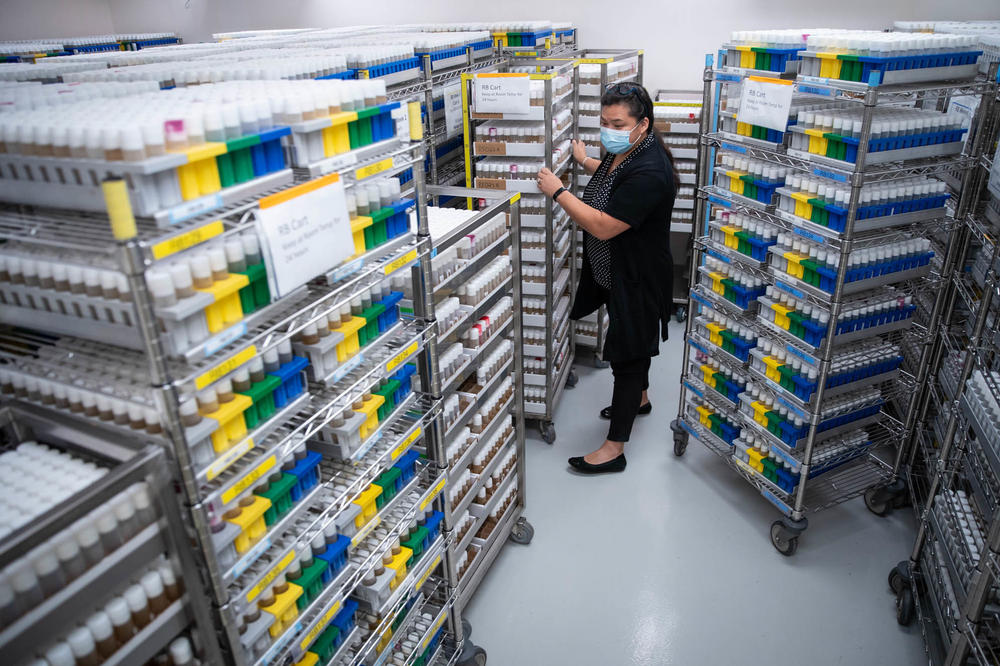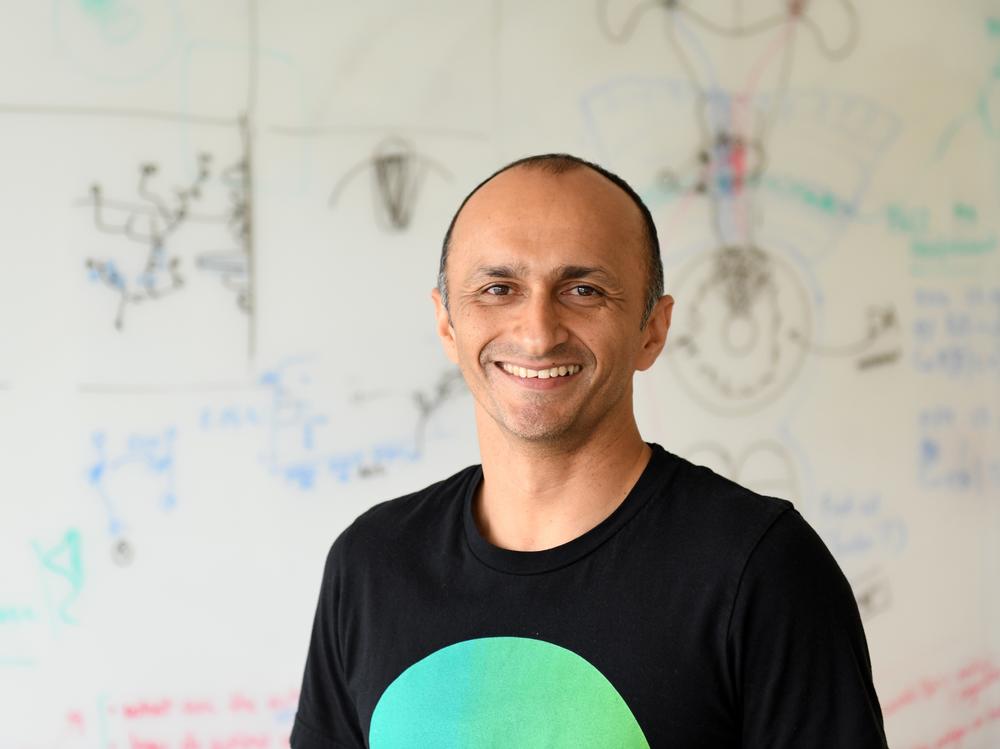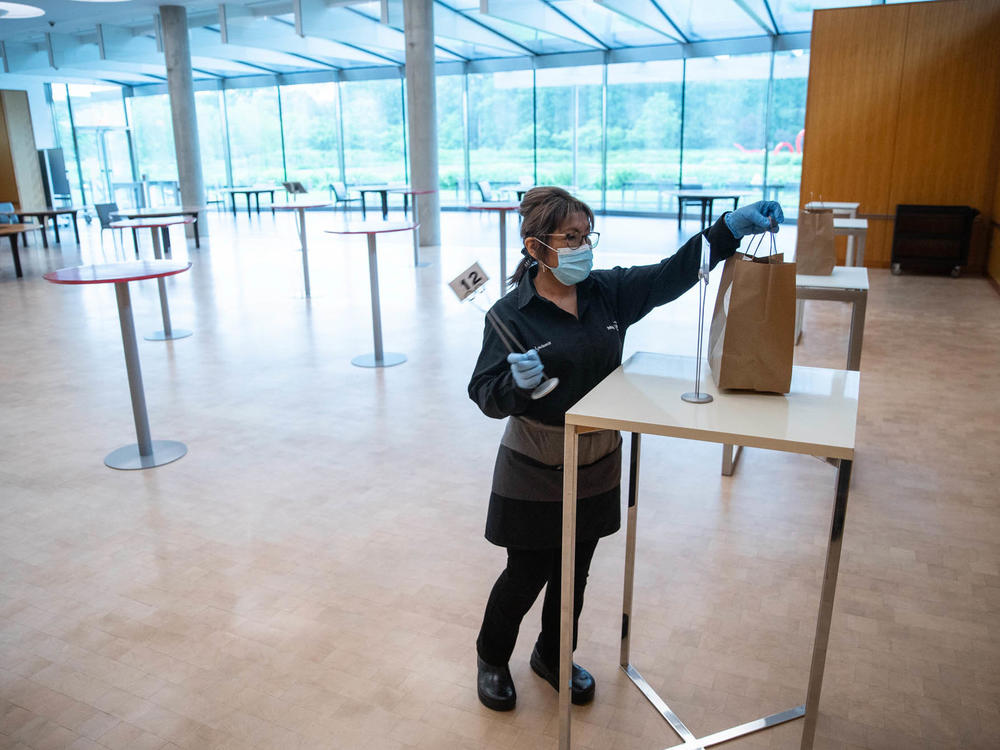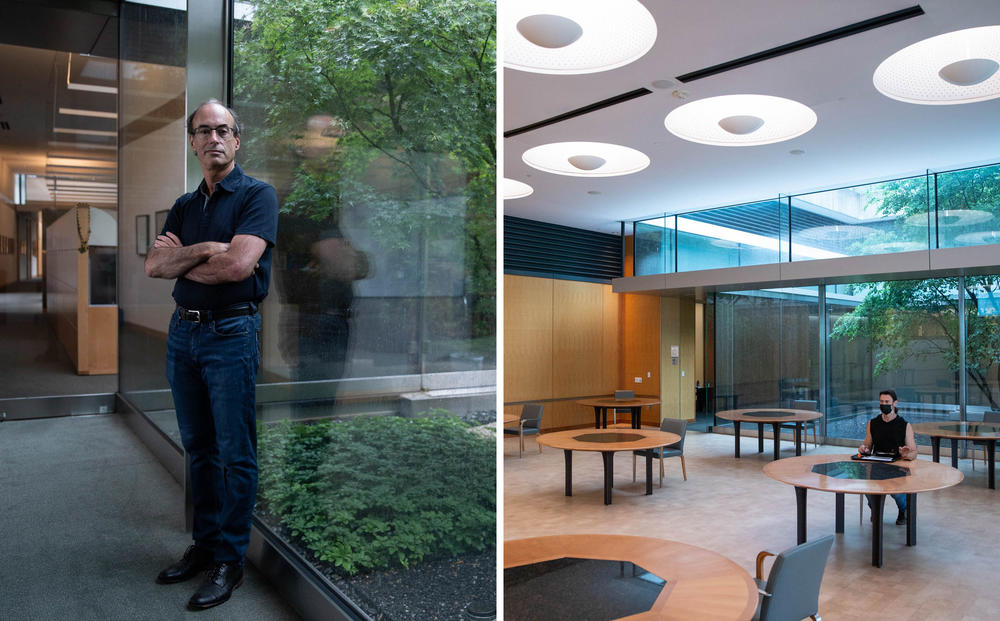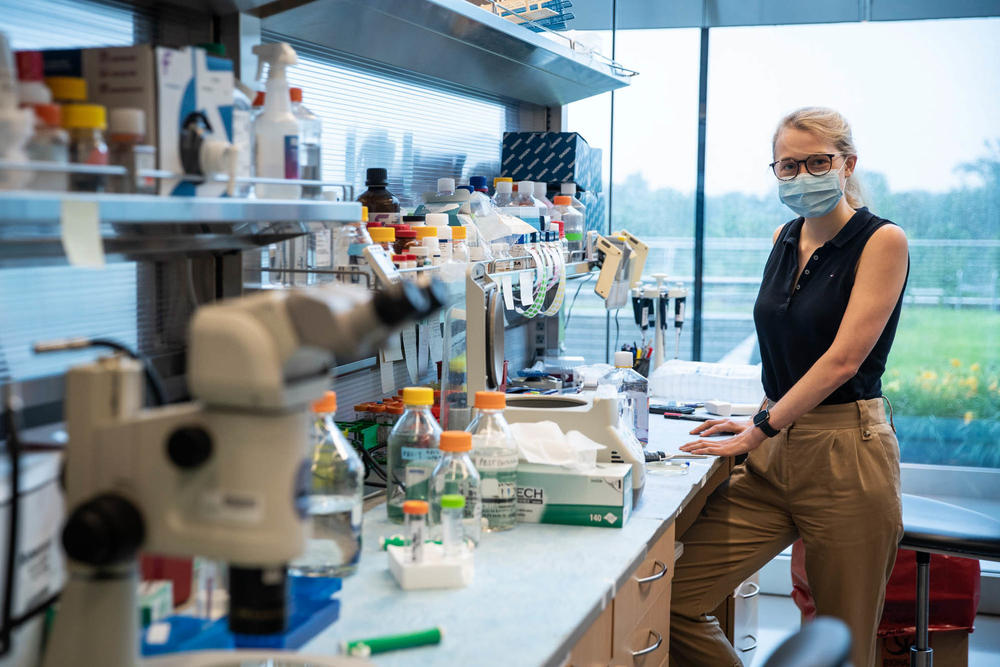Section Branding
Header Content
It's Personal: Zoom'd Out Workplace Ready For Face-To-Face Conversations To Return
Primary Content
Studying the brains of fruit flies is not the kind of work that you can easily do from home. You need special microscopes and something called a fly-ball tracker, which neuroscientist Vivek Jayaraman likens to a treadmill. A very tiny treadmill.
"We position them on a little ball. The fly walks on the ball. It's in a virtual reality space," explains Jayaraman in his lab at the Janelia Research Campus, part of the Howard Hughes Medical Institute.
But access to lab equipment was not the only hurdle — or the biggest one — in the pandemic. Jayaraman says the absence of freewheeling discussions and impromptu chats held back the science over the past year. The migration to telework and virtual meetings stole away the spontaneity that he believes drives their best work.
"It really affected us perhaps more than many institutions," Jayaraman says.
Now that COVID-19 vaccines are available on demand and infection rates are a small fraction of what they were just a couple months ago, workplaces across the country are taking stock of the what was lost over the past year, and what's worth bringing back. Many employers, from Google to the federal government, are making hybrid work options permanent, allowing employees to split their time between home and office. But others are eyeing a future that looks much more like the past.
Before the pandemic, Janelia had about 750 people on campus, working to answer big questions in brain science, cell biology and microscopy. The plan is to bring everyone, including administrative staff, back full-time by late September. "The way things are going right now with cases and vaccination, we are looking forward to holding to that date," says Ron Vale, Janelia's executive director.
The building was socially engineered to encourage face-to-face interactions
Jayaraman has been with Janelia for 15 years and is steeped in the ethos of the place, believing that it's not just collaboration, but "organic, creative collisions" that lead to great discoveries.
"This building — it's been socially engineered so that you do have those kinds of collisions," he says. In a three-story building that spans the length of three football fields, there is only one tea and coffee station. And that's by design.
The idea is, while walking the halls or waiting for coffee, you might run into someone you didn't plan to see. You start chatting, and an idea gets sparked. You follow up, maybe in the evening when the coffee station turns into a pub. In the pandemic, Jayaraman realized how critical those conversations are to his thinking process.
"[They] help me articulate ideas that might be dimly in there somewhere, dormant," he says. "Then someone says the right thing, and something is triggered. I miss that."
Zoom meetings with pre-determined agendas where participants have to take turns talking and no one interrupts just don't do it for him.
Covid safety protocols remain in place
Already, several hundred researchers are back on campus, but most appear to be tucked away in their offices or labs. You don't see a lot of people wandering the halls. Covid safety protocols are still very much in force, with masks and distancing required. The cafeteria, normally crowded and noisy, mainly handles takeout orders now.
Before the pandemic, lunch was only served between 11:30 a.m. and 1 p.m., again, by design. Seating was at big round tables with eight chairs each, like at a wedding.
"We wanted people actually to have lunch together," says Vale, as he orders an eggplant ragout sandwich to go. "We were encouraging high density interactions then, exactly the opposite of what we're doing now."
Those who choose to dine in now have to dine alone.
But Janelia has been thinking hard about how to get people face-to-face again. Back when it was chilly outside, they created cozy seating areas around fire pits. They put up a tent. They do twice-weekly COVID-19 testing for everyone who comes in to work.
"That's been an important additional safety measure," says Vale. Starting in late August, employees will have to show proof of vaccination to come on site.
A few good things have come out of the pandemic
Vale does hope to hold on to some of the innovations that have come out of the pandemic. After canceling all in-person events and conferences last year, Janelia created an online seminar series that drew in people from around the world, including those from smaller institutions and farther-flung places.
Not having people traveling to Virginia from across the world saved time and carbon emissions. "With the remote world now, the energy barrier for getting people to communicate obviously is a lot lower," says Vale. Virtual conferences will continue, even when in-person conferences resume.
Graduate research fellow Virginia Rutten found another silver lining this past year. She's been able to connect with all kinds of people who normally are tied up in meetings or running places.
"You just feel that everyone's a little more relaxed, has that time to explain that extra thing to you," says Rutten, who studies larval zebrafish. "That's been really valuable and a real treat."
Copyright 2021 NPR. To see more, visit https://www.npr.org.
